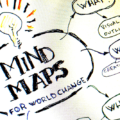Your stakeholder list is an integral part of your project management. A correct stakeholder list will help you manage communication, coordination, buy-ins, programs, services, delivery, and support. Do you have the right people on board? Who is missing?
Your stakeholders are crucial to the success of your program. Not identifying or communicating with them throughout a project’s life cycle can lead to several problems.
Do you have the right people on board? Who is missing? Did you invite the community leader to your program’s roll-out so that they can see how it will affect the community as a whole and take the necessary steps?
Why create a stakeholder list?
- Helps to communicate effectively with the correct stakeholders
- Reduces delayed inputs
- Helps to ensure that project resources remain available
- Reduces project cycle time by helping to avoid project setbacks
Your stakeholder list is an integral part of project management because it can positively or negatively impact communication, coordination, buy-ins, programs, services, delivery, and support.
Who are your stakeholders?
A project stakeholder is any individual interested in the project or affected by the project. A few examples of stakeholders are vendors, sponsors and your project team members.
How to identify your stakeholders
Ideally, you should identify your stakeholders before or at the earliest stage of your project. Here are a few ideas to start determining who your stakeholders are:
- Project Charter
- Contract documents
- Brainstorming Sessions
Relevant questions to ask:
- Who are the people crucial to the project’s success?
- Who will be directly affected by the project?
- Who will be directly affected by the project deliverables?
Create a Stakeholder List
As you identify your project’s stakeholders, build a stakeholder list.
What is a stakeholder list?
A stakeholder list is a tool that helps to categorize and manage your stakeholders. The list also enables you to prioritize your stakeholder’s role and is a crucial input in your project communication strategy.
Organize your stakeholder list
Your project’s success depends heavily on if you have developed a well-detailed stakeholder list with adequately defined roles.
To organize your stakeholder list, you can use the RACI chart to define the responsibilities of each of your stakeholders on your stakeholder list.
How to use a RACI chart
A RACI chart is a matrix of all your project activities, stakeholders, and their responsibilities during the project. Use the RACI matrix to define each stakeholder’s role and divide them into four association types.
- Responsible
- Accountable
- Consulted
- Informed
By implementing the RACI method, you can clearly define roles for all stakeholders and also prevent role confusion at any point of the project.
To divide your stakeholders into the four association types, create a classic RACI chart as shown in this guide here.
Revise and assess your stakeholder list
Stakeholder management doesn’t end here! A friendly reminder… do not forget to revisit and assess your stakeholder list.
Ask yourself:
- Has project scope changed?
- Do you need to add people to the team?
- Or maybe people need to be removed from the team that no longer are needed at meetings?
And don’t stop there, reevaluate the priority level of each stakeholder too! Do you need to change their priority level or categorize them differently based on their current responsibility?
Avoid these common stakeholder communication issues by reassessing your stakeholder list at each stage of your project life cycle to confirm it is still relevant.
Do you need help with creating and managing your stakeholder list?
Then, a free consultation is just right for you! Click here to get started.





